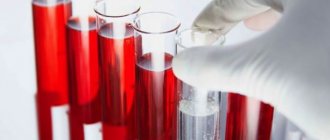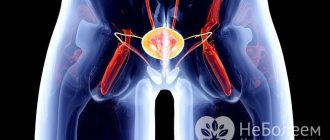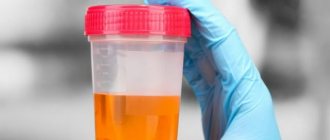Symptoms of pathology
The pathology is characterized by pronounced symptoms. Among them:
- constant thirst and increased amount of water consumed;
- sudden weight loss;
- fatigue, drowsiness;
- skin irritation and itching;
- decreased vision sharpness.
The first symptom of the disease is a constant feeling of thirst, as a result of which a person drinks about 4-5 liters of water. The disease is accompanied by a frequent urge to urinate, which is caused by a large amount of fluid drunk.
Sudden weight loss becomes the second alarming symptom, which is already enough to contact the clinic. The patient often feels depressed and drowsy. Waking up in the morning, a person feels tired.
The disease is often accompanied by skin irritation, especially in the pubic and genital area. There is itching, redness and peeling.
Having discovered alarming symptoms, the patient should immediately contact the clinic for a diagnosis. This is especially important for patients with diabetes, otherwise there is a risk of developing serious complications, including diabetic coma.
Diagnostics
If glucosuria is detected, you must consult a general practitioner to find out the cause of its occurrence. Anamnestic data is important - the doctor clarifies whether the patient has been diagnosed with diabetes mellitus, whether the intake of carbohydrate foods preceded the test, and what medications he is taking.
Information about whether the patient is registered with other specialists (nephrologist, endocrinologist) may be useful. Glucose levels are most often tested in a general urine test using multifunctional test strips that allow you to determine several indicators. There are also monofunctional urine strips for glucose only. To more accurately determine the loss of glucose in the urine, the doctor may order a glucose test in 24-hour urine.
Special attention is paid to vitamin C - if a positive result for urine glucose is combined with a high concentration of ascorbic acid, the test should be repeated, and no earlier than 24 hours after the last dose of vitamin C. Attention is paid to other indicators (protein, red blood cells, white blood cells ), the identification of which can serve as an aid in the differential diagnosis of the etiological factor. An additional examination is prescribed, including:
- Microscopy.
Microscopic examination of urine sediment can reveal such pathological elements as crystals of uric acid and amino acids (cysteine, tryptophan), formed elements (erythrocytes, leukocytes), epithelial cells, cylinders. Fungal mycelium and spores are often found in patients with diabetes. - Blood tests.
A biochemical blood test determines the level of glucose on an empty stomach and after an oral stress test (glucose tolerance test), glycated hemoglobin, and fructosamine. The concentration of creatinine, urea, electrolytes (sodium, potassium, bicarbonate, calcium) and the state of acid-base balance (pH) are examined. - Hormonal profile.
If an endocrine disorder is suspected, a blood test is taken for thyroid hormones (T4, T3), pituitary hormones (TSH, ACTH), and insulin-like growth factor. To confirm hypercortisolism, a small dexamethasone test is performed. In patients with pheochromocytoma, it is necessary to analyze 24-hour urine for metanephrines. - CT, MRI, ultrasound.
In order to visualize damage to the central nervous system (detection of a tumor, hemorrhage), an MRI of the brain is prescribed. To identify a tumor that produces an excess amount of the hormone, an ultrasound of the thyroid gland, CT scan of the adrenal glands, and MRI of the pituitary gland are performed.
Urine glucose test
Risk group
At risk of developing this disease:
- patients with congenital or acquired diabetes mellitus;
- pregnant women;
- athletes with intense physical activity;
- people who are overweight and tend to overeat.
The disease can accompany kidney and pancreatic diseases, and is also common in people with metabolic disorders.
Symptoms and complications caused by sugar
Symptoms of glycosuria appear equally in women and men. A one-time increase in the indicator in the tests should not cause panic in the patient. If the results have been confirmed, then you should seriously think about diagnosing and treating the body.
The patient may complain of the following symptoms:
- dry skin;
- feeling of thirst;
- increased fatigue;
- discomfort in the external genital area, burning and itching;
- urinary disturbance;
- decreased appetite and body weight;
- inability to overcome physical activity;
- drowsiness;
- protracted course of infectious diseases.
Even one of the above signs, if manifested clearly, indicates a malfunction of the body.
In advanced stages, the patient may experience the following symptoms:
- confusion;
- change in the smell of urine;
- increase in the amount of urine excreted.
In laboratory conditions, changes in the properties of urine are detected:
- reduction in specific density;
- detection of acetone;
- detection of ketone bodies.
The state of glycosuria leads to a decrease in local immunity, increased sensitivity to infectious diseases, the patient is at risk of coma and the development of ketoacidosis. Glucosuria itself does not cause complications; diabetes mellitus leads to them. The patient becomes increasingly dependent on insulin. Pregnant women run the risk of miscarriage, polyhydramnios, birth injuries, and there is a risk of developing preeclampsia.
During pregnancy, it is important to differentiate gestational diabetes from physiological changes. Difficulties arise due to a decrease in the renal threshold. Additionally, such patients undergo a glucose tolerance test.
Causes of pathology
The disease can develop for the following reasons:
- lack of insulin (diabetes);
- inflammation of the pancreas;
- head injuries;
- kidney disease;
- excessive consumption of carbohydrates.
In diabetes mellitus, due to insulin deficiency, an increase in blood glucose levels is observed. This also leads to the formation of sugar in the urine.
With pancreatitis and other diseases of the pancreas, an increase in sugar levels may be a temporary phenomenon due to excessive load on the pancreas. As a rule, the symptoms disappear on their own after the inflammation of the pancreas is relieved.
Pathology is often observed after a long period of fasting or a strict diet. The level of sugar in the urine returns to normal when the diet is normalized.
The disease can occur in a mild form, without obvious symptoms. In this case, tests are necessary to make an accurate diagnosis. Also, based on the test results, the doctor will determine the cause of the development of the pathology.
Urine sugar levels for adults and children
Normally, in a healthy adult, the test should not detect sugar in urine. This parameter does not differ between women and men. It is possible that a small amount of sugar is present, which does not indicate the presence of diseases. Modern, particularly sensitive instruments can detect a small fraction of molecules.
Normal indicators:
- 0.06-0.082 mmol/l;
- the limit value for a healthy adult is 1.7 mmol/l;
- the average renal threshold is 8.9-10 mmol/l.
More detailed diagnosis is required if the amount of sugar approaches the renal threshold. This concept means that the kidneys are approaching a stage when they can no longer cope with the processing of increased amounts of substances. This number differs for each person and depends on age, health status and other individual characteristics. The older a person gets, the lower this indicator is; the reason for this phenomenon is the difficulty in absorbing sugar by the kidneys.
Additional studies are prescribed to make a diagnosis. If the level rises above 10 mmol/l, registration with an endocrinologist is mandatory.
On a note! Increased levels may appear if the patient previously consumed a lot of sweets, caffeine, Phenamine, and diuretics. Similar results appear with overeating and stress.
For a child, the picture is somewhat different.
- Normally there is no sugar;
- permissible value 1.7-2.8 mmol/l;
- over 2.8 mmol – increased level.
If there is a suspicion of diabetes in a child, the glucose level will be elevated and the urine density will be high. To confirm the diagnosis, blood is given for analysis.
If the test results show a result of 1.7-2.8 mmol/l, doctors recommend retaking the test a few days later. Preliminary stress or taking sweets, fruits, certain medications, or ascorbic acid on the day before the test can lead to an increase in glucose levels in urine.
In rare cases, the problem is found in pregnant women. Morning urine is taken for testing. If the result is confirmed twice in a row, then we are talking about gestational diabetes. Reduced glucose absorption occurs in 2% of pregnant women in the second trimester. The pathology leaves the body without medical intervention immediately after childbirth. The risk group includes women who are overweight, as well as those with a genetic predisposition.
Classification and varieties
The disease often occurs in diabetes mellitus. Depending on the cause, pathology is divided into three classes:
- alimentary glucosuria - a short-term increase in glucose in the urine after eating a meal rich in carbohydrates;
- pathology of the emotional type - increased glucose under the influence of stress, depression, neurosis;
- hormonal glucosuria - during pregnancy, due to hormonal changes in the body.
The diagnosis is made after examination by a urologist or endocrinologist.
There are several types of the disease:
- daily allowance;
- renal;
- renal glycosuria.
Daily glycosuria is characterized by an increase in the amount of glucose during the day. It depends on the diet, namely on the amount of carbohydrates in the menu. Daily diarrhea is often observed in those with a sweet tooth and athletes. Changes in urine sugar levels during the day are not a reason to make a diagnosis, so repeated tests are often required.
If the level of sugar in the blood is normal, but in the urine it is elevated, doctors make a diagnosis of renal glycosuria. This often occurs with renal failure or inflammatory processes in the kidneys. In this case, symptoms may be practically absent and carbohydrate metabolism is not disturbed.
Kidney disease often accompanies diabetes mellitus. Also, renal glucosuria can be observed in children with retarded physical development and in adults with kidney pathology. In diabetes mellitus, glycosuria requires separate treatment and diet.
Symptoms
In the initial stages of renal glycosuria, the symptoms are quite scarce and boil down to its accidental detection in a clinical urine test. With low levels of glucose in the urine, some symptoms may appear: general ailments and weakening of the body, a feeling of constant thirst, and possibly a difficult-to-treat infectious disease of the urinary system.
In severe cases, it is possible that ketones and acetone may appear in urine (urine has a strong unpleasant odor), an increase in the volume of urination (more than 3 liters per day), fainting, sweating, leg cramps, changes in visual acuity, diarrhea, and in infants, weight loss occurs. and possible delay in physical development.
During pregnancy, without testing, the increased presence of glucose in the urine can be determined by the following symptoms: frequent increases in blood pressure, constant thirst and hunger, infectious processes in the urinary system and frequent urination. Not all women are predisposed to the appearance of glycosuria; the risk group includes: women over 40, genetic predisposition to diabetes (in parents, grandparents), obesity of 2 and 3 degrees.
It may seem that glycosuria is diagnosed only in women, but the male population also suffers from it, especially in old age.
Diagnosis of the disease
The diagnosis takes into account the amount of glucose in the urine. There are two methods for determining this value.
The first involves the use of special strips that react to elevated glucose levels. The analysis is taken only once. The second method is based on studying the daily urine rate.
When determining the test result, the following is taken into account:
- the amount of carbohydrates taken during the day;
- day of the menstrual cycle in women;
- hormone levels;
- blood sugar level;
- patient's physical activity.
Only on the basis of this information can an accurate diagnosis be made. Most often, a re-examination is necessary.
If glycosuria is diagnosed, the doctor will clearly explain at the appointment what it is and how best to treat the pathology.
Treatment process for glycosuria
No effective drug therapy has been developed against this disease, so glucosuria is treated by following a strict diet.
In most cases, treatment for renal glycosuria is also not required. An important aspect in the development of this pathology is providing an adult or child with proper nutrition. It is important to prevent the development of hyperglycemia, in which the concentration of sugar in the urine will increase. To prevent this process, it is important to control the carbohydrate content of the food consumed.
People suffering from renal glycosuria lose a lot of potassium, and therefore, their diet must include a large amount of foods containing it. A lot of potassium is found in legumes, sprouted grains and vegetables. If you follow the diet, the prognosis of the disease remains favorable.
Glucosuria, as a rule, is inherited, so a good prevention of the disease is medical and genetic counseling of future parents. Children with renal glucosuria should be under constant supervision of specialists.
Treatment of the disease
After diagnosis, the doctor prescribes treatment aimed at eliminating the cause. There is no symptomatic treatment. You can lower the level of sugar in the urine only after eliminating the factor that contributes to the increase in the amount of glucose.
In case of diabetic high sugar levels in urine:
- the amount of liquid consumed is not limited;
- a special diet is prescribed;
- it is possible to increase the dose of administered insulin even in the case of an insulin-independent form of the disease.
If the disease develops due to stress or pregnancy, no special treatment is required. The doctor prescribes a simple diet, which consists of eating small meals frequently. This allows you to reduce the load on the pancreas and improve carbohydrate metabolism in the patient’s body.
The disease in patients with diabetes can lead to a deterioration of the condition, and therefore requires mandatory adjustment of treatment. If you notice the first symptoms, you should immediately consult an endocrinologist.
Symptoms of the disease
There are no pathological processes in the human body that are completely asymptomatic. So, glycosuria also has its own symptoms, ignoring which can have serious consequences. First of all, the patient should pay attention to:
- constant and very strong thirst;
- a sharp jump in body weight in one direction or another;
- constant fatigue, weakness, tremors in the limbs;
- insatiable hunger, which leads to weight gain (often this symptom occurs with diabetes);
- excessive dryness of the skin, the appearance of wounds and cracks on its surface that do not heal for a long time, causing severe pain;
- itching and “goosebumps” all over the body (but most often discomfort is felt in the groin area).
Among other things, glucosuria is often accompanied by decreased visual acuity, constant drowsiness and a depressed psychological state.
Glucosuria – glucose in the urine. True glycosuria
1. Nutritional glycosuria
. In healthy individuals, the appearance of sugar in the urine after consuming sugar in food always raises suspicion of diabetes. Nutritional glycosuria without diabetes is observed only after fasting, when the body temporarily loses the ability to absorb sugar or mobilize insulin.
It is known that with a diet low in carbohydrates or after fasting, the body's ability to absorb sugar decreases, in this case, when testing with a sugar load, the blood sugar curve is of a diabetoid nature (diabetes from fasting).
Temporary glucosuria can be caused by the direct introduction of a large amount of dextrose into the intestine when feeding a patient after gastrectomy or gastroenteroanastomosis. Under these conditions, and also in fasted individuals, it is impossible to estimate the sugar loading curve.
In this case, glycosuria does not depend on nutrition and is not susceptible to the action of insulin; The blood sugar level is normal or even slightly reduced, the sugar load curve remains unchanged or somewhat flattens, and there are no signs of diabetes. Steroid drugs increase renal glycosuria. Secondary form
renal glucosuria is observed very rarely, with nephrosis, as well as with poisoning with potassium cyanide, salts of heavy metals.
2. Renal glycosuria . Primary form
renal glucosuria is a congenital defect of the proximal renal tubules, their functions: reabsorption of sugar does not occur or occurs to an insufficient extent, and therefore, even with normal blood sugar levels or with a slight increase in it, sugar is excreted in the urine.
Glucosuria in pregnant women
in most cases it is renal type glucosuria, but it is necessary to remember the possibility of true diabetes during pregnancy (sugar load test). In renal glucosuria, analysis data performed on an empty stomach have low values, the load curve is normal throughout, does not exceed 180 mg/100 ml, and drops to the initial level or below within two hours. With renal glucosuria in pregnant women, the renal threshold for fructose is also lower.
For Fanconi syndrome
renal glucosuria is combined with aminoaciduria and hypophosphatemic osteomalacia, with rickets. Phosphate diabetes may occur with renal glycosuria in the absence of other symptoms. In this case, we are talking about a developmental defect, which can be accompanied by hyperchloremic acidosis (with an increase in chlorine in the blood) and hypokalemia, and the content of alkaline phosphatase also increases.
Differentiation of this form is impractical, since if a normal sugar load curve is obtained, a test with prednisolone can be performed, which increases the sensitivity of the load test and can lead to the identification of a curve characteristic of diabetes.
Cyclic glycosuria
- normoglycemic alimentary glucosuria, which is either mild renal diabetes (normal blood sugar values when examined on an empty stomach do not yet cause glucosuria, but an increase in blood sugar within normal limits after eating, for example up to 150 mg/100 ml, already leads to glucosuria or is incipient true diabetes).
True diabetes may also have a renal component: despite relatively mild hyperglycemia, significant glycosuria is detected. This phenomenon is characteristic of steroid-induced diabetes. There are cases of renal glycosuria, which for a long time is combined with true diabetes.
3. True insular glycosuria
caused by diabetes mellitus. Until appropriate studies exclude the possibility of diabetes, any case of glycosuria should be considered as a manifestation of this disease. Typically, the diagnosis of diabetes is not difficult and is based on a number of general symptoms (polyuria, polydipsia, polyphagia, muscle weakness, weight loss, susceptibility to infectious diseases, itching, acidosis, angiopathic manifestations) and the presence of hyperglycemia.
If the blood sugar level is normal, the diagnosis is confirmed by the sugar load curve; in doubtful cases (latent diabetes), a sugar load is carried out with a preliminary increase in sensitivity using steroids. The degree of diabetic glycosuria can be influenced by diet, insulin, in some cases, the use of antidiabetic drugs orally, and fasting. Diabetic acidosis is recognized on the basis of glycosuria, acetonuria, the presence of acetoacetic acid in the urine, Kussmaul respiration (with the smell of acetone), exicosis, hypotension and characteristic laboratory test results. In pheochromocytoma, adrenaline increases blood sugar above the renal threshold.
4. Extrainsular glycosuria
also commonly called diabetes.
These include glycosuria due to increased function of the anterior pituitary gland or adrenal cortex. Similar glycosuria resulting from hyperglycemia are observed in acromegaly ,
Morgagni
syndrome or Cushing's syndrome, as well as in hyperthyroidism.
Glucosuria of this type is usually not significant; diabetes is mostly resistant to insulin, is not prone to acidosis, and is little influenced by diet. The symptom of glycosuria recedes into the background in the presence of characteristic signs of the underlying disease.
Glucosuria can also be caused by long-term treatment with adrenocorticotropic hormone (ACTH), growth hormone or adrenal steroids.
5. Other diseases with glucosuria.
Excitation of the centers of the hypothalamus, lesions in the area of the second ventricle of the brain through the sympathetic-adrenal system increase glycogenolysis in the liver, and thereby the blood sugar level, causing glucosuria.
Due to the mechanism of Bernard's sugar injection, glycosuria can be observed with brain injuries, brain tumors, encephalitis, meningitis, and carbon monoxide poisoning.
These glucosurias are temporary.
Anoxia of the brain can be the cause of glucosuria, which occurs when the patient is in shock (for example, during myocardial infarction,
when hyperglycemia is also observed).
The presence of hyperglycemia, especially long-term, always raises suspicion of latent diabetes. Temporary glucosuria can also be observed in severe infectious diseases.
In these cases, it is important to determine whether it is a symptom of true diabetes due to an infectious disease.
Diabetes occurring after mumps
may be a consequence of pancreatitis, but recently more and more evidence points to the direct role of viruses in the etiology of diabetes.
Primary pancreatic diabetes is usually severe; daily use of 30 - 40 units of insulin is sufficient to maintain balance. Very rarely, diabetes can be caused by injury to the pancreas, but the relationship between diabetes and injury has not yet been definitively determined. The pancreatic origin of diabetes can be assumed in the case when glucosuria is directly associated with pancreatic disease.
6. Pancreatic diabetes.
Diabetes, which develops as a result of a lack of insulin as a consequence of a violation of the islet apparatus, can be observed in acute necrosis of the pancreas, in chronic pancreatitis, in acute pancreatitis due to mumps or other infection, less often in pancreatic tumors and after removal of the latter.
7. Existence of hepatic glycosuria
doubtful. In the process of hepatitis, cholangitis, carcinomatosis, cirrhosis, steatosis, the liver is not able to sufficiently regulate blood sugar, glycogen synthesis decreases or glycogenolysis increases, which leads to hyperglycemia and glycosuria.
There is no evidence to suggest that liver disease itself causes diabetes, but diabetes is common with liver disease, especially cirrhosis. Liver diseases complicate the course of pre-existing diabetes. A special place is occupied by hemochromatosis, in which glucosuria is of pancreatic origin.
Variety of causes of glycosuria
makes differentiation difficult. However, in practice, we can proceed from the following: if the urine reduction test is positive, the blood sugar level is examined; if it is elevated, a diagnosis of diabetes mellitus can practically be made.
If the blood sugar level is normal, then a sugar load should be carried out. If normal results are obtained, the nature of the substance that caused the reduction (glucose or not) should be established. If the detected substance is glucose, then renal glycosuria occurs. The diagnosis of symptomatic or extrainsular glycosuria is made based on recognition of the underlying disease.
Clinical picture
In a person with a healthy endocrine system and kidneys, glucose is present in the urine in small quantities - no more than 0.06-0.08 mmol/l. It is not detected during standard urine tests; the sensitivity of the methods is not so high. The kidneys reabsorb (release back into the blood) all the sugar that passes through them. If glucose does appear in urine in children or adults, this condition is called glucosuria. Typically, the higher the glucose level, the greater the volume of urine - polyuria develops.
For glucose, there is the concept of “renal excretion threshold” - this is the concentration of a substance at which it can no longer be reabsorbed in the renal tubules. This threshold depends on a number of individual indicators of the body. In children it is always higher (10.5-12.6 mmol/l), in adults it decreases with age (8.8-10 mmol/l). As the renal threshold is exceeded, urine tests begin to detect increased glucose.
Various pathologies can cause an increase in sugar in the urine, but all causes of glucosuria come down to changes in the following indicators:
- Blood sugar concentration (normal – up to 5.5 mmol/l);
- Filtration intensity in the renal glomeruli (normal – 130 ml per minute);
- The rate of reabsorption in the renal tubules (normal is 200-350 mg per minute).
Diagnosing the disease
A healthy person also sometimes has sugar in their urine, but this is not considered a deviation. All you need to do is get tested to make sure everything is fine with you.
To diagnose the disease, a laboratory test is needed. Glucosuria can be detected in the body in the following cases:
- lack of insulin in the urine;
- liver or kidney function is impaired;
- Constant consumption of foods rich in carbohydrates.
Therefore, at the first suspicion of a disease, you should immediately go to the hospital and check whether you have such a disease. And most importantly, remember - your health is in your hands.
The role of the kidneys in glucose metabolism
The level of glucose in human blood under normal conditions is controlled by:
- pituitary gland;
- pancreas;
- adrenal glands;
- thyroid gland
The condition of the kidney vessels determines whether glucose appears in the urine
Endocrine glands are connected to the nervous system. Its role is indicated, for example, by the stress reaction. Fear, excitement, and hard work cause excitation of certain centers of the brain. To overcome it, the body needs additional energy. “Instructions” are received by the endocrine glands, they produce increased levels of adrenaline and norepinephrine, which, in turn, contribute to increased levels of glucose in the blood (hyperglycemia).
Through arterial vessels, sugar enters muscle cells, hearts, and lungs. As a result, the body is able to perform additional work and protect itself from negative influences. Glucose travels through the blood to the kidneys.
Millions of structural units - nephrons - are constantly working in this organ. They are glomeruli of the finest capillaries surrounded by a capsule (Shumlyansky-Bowman). Under pressure from the capillaries, the liquid and some of the substances dissolved in it pass (filter) through the membrane wall and collect in the tubules of the medulla.
In addition to glucose, nitrogenous substances, electrolytes (sodium, chlorides, potassium), and amino acids are included here. Large molecules, such as proteins, do not pass through the membrane.
Next, the necessary compounds are selected from the tubules and absorbed back (reabsorbed) into the blood. Decay products and metabolic waste remain in the urine.
The role of individual segments of the tubular system in the reabsorption of glucose has been revealed
It has been established that epithelial cells are responsible for the “return” of glucose. They contain special transporters that ensure the transport of glucose molecules along with sodium ions. The sodium-potassium pump of the basement membrane creates the necessary difference in the concentration of sodium ions for this movement. It turns out that active sodium transport promotes passive glucose transport.
Glucose returned to the blood is sent to the cells, and the excess is converted into glycogen in the liver and forms the necessary energy reserve.
Forecast
Since glucose is a breeding ground for bacteria, long-term glucosuria increases the risk of genitourinary tract infections several times. The most serious consequences for human health and life depend on the underlying pathology. The most unfavorable prognosis with high mortality is observed with pancreatic necrosis and brain tumors.
In diabetes mellitus, the prognosis can be severe, but with proper therapy and constant glycemic control, complications are extremely rare. Detection of glycosuria in pregnant women requires further examination to exclude gestational diabetes. The most benign course without any threat to life is typical for people with isolated renal glucosuria.
Traditional medicine in the fight against high glucose
Tangible results can be achieved by practicing traditional methods of treating sugar. For example, you can grind and mix dandelion roots, blueberry and chamomile leaves, then brew them with boiling water and take them every seven days, three times a day. Oat seeds will also be useful: pour one glass of seeds with three liters of boiling water, then boil for an hour and filter through cheesecloth. Before each meal, you should drink a glass of decoction to compensate for excess glucose in the body.
Another recipe is based on blueberry leaves ground and boiled in boiling water, a decoction of which should be taken half an hour before meals in a volume of 150–200 ml. Experts also recommend including cinnamon in your diet, as this spice has been proven to lower blood sugar when consumed regularly.
Symptoms of pathology
If we are talking about primary glucosuria, then there may be no characteristic signs of the disease. It is detected during routine examinations. Secondary damage, in which a significant amount of sugar is released with urine, is manifested by the following symptoms:
- increased fatigue;
- obsessive feeling of hunger;
- pain in the legs (more often appear during long walking);
- constant thirst;
- polyuria (increased amount of urine excreted);
- muscle weakness;
- drowsiness;
- visual impairment: loss of acuity, appearance of double vision;
- diarrhea;
- increased sweating;
- change in heart rate;
- Children may experience delayed physical development and decreased body weight.
If several of the listed signs appear, it is necessary to undergo an examination. It’s easy to identify the problem – you just need to get your urine tested. By the way, it is not difficult to identify this pathology in pregnant women due to the fact that expectant mothers are constantly sent for blood and urine tests.
Complications
In the congenital form of the disease, pathologies of the urinary system may appear: frequent inflammatory processes, pyelonephritis.
Changes in heart rate occur due to a lack of vitamins and minerals (if absorption is impaired), and dehydration is possible.
If the patient suffers from diabetes, the range of complications increases, these are:
- disorders of the cardiovascular system, stroke, heart attack;
- pathologies of a neurological nature: loss of sensation in the limbs, swelling;
- disturbances from the organs of vision, up to complete blindness;
- diabetic foot;
- ulcers of the extremities, complete destruction of bones and blood vessels.
The lack of drug therapy for diabetes can lead to serious health consequences and disability. Sudden jumps in blood sugar are dangerous due to hyperglycemic coma (and hypoglycemic coma when jumping down).
Diet
The fight against glucosuria involves, first of all, reducing sugar levels. This can be achieved using the most accessible method - diet. Nutrition should be based on natural ingredients, harmful additives and canned food, fast food is strictly prohibited.
Useful products for glucosuria are:
- fresh vegetables, cereals;
- meat and fish (low-fat variety);
- fruits and berries (in moderation);
- fermented milk products with low fat content;
- dill, parsley, other greens.
You should exclude from your diet:
- sweet, carbonated drinks;
- all types of chocolate, coffee, sweets;
- pastries and white bread;
- carrots, celery, potatoes (and everything containing starch);
- sauces, fatty foods, various additives;
- semi-finished products.
At the same time, you should not forget about the drinking regime; it is advisable to drink boiled or bottled water without gas.










